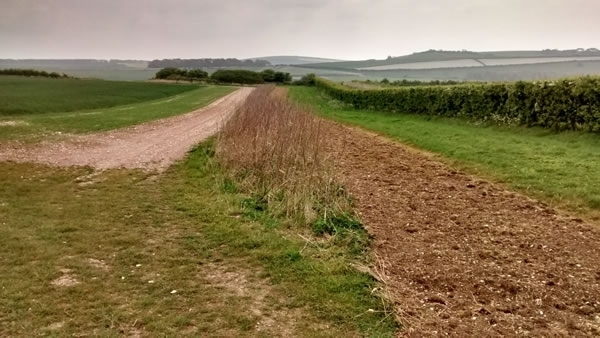By Dave Parish, Head of Scottish Lowland Research
The Trust has recently begun work on the exciting Interreg PARTRIDGE project, which teams-up conservationists from England, Scotland, Netherlands, Belgium and Germany to demonstrate how farmland managed specifically for Grey Partridge (hence the clever name!) helps to recover farmland wildlife in general.
We work at ten sites across northern Europe. In the UK, this will involve Whitburgh and Balgonie in Scotland, and Loddington and Rotherfield in England. Rotherfield is a long-established GWCT demonstration site where Francis Buner successfully reintroduced Grey Partridges after local extinction in the mid-2000s. To try and learn from the experiences at Rotherfield, some of the Scottish team visited recently to take a look around.
We were fortunate enough to have Graham Rankine with us, the gamekeeper at Whitburgh Farms, and were joined by a number of local farmers on a walk lead by Francis, Joe Edwards (the estate and farm manager), Tim Furbank (Oakbank seed merchants) and Harold Makant (the local Natural England representative).

Francis (centre-right) holding court!
It was a great trip, despite the chilly weather, and we heard about a variety of steps being taken by the team at Rotherfield to benefit Grey Partridge. The key ones that stuck out for me were the cover crops, designed to provide year-round resources as simply as possible, and the extended stubbles, which provide better cover than traditional stubble fields.
The cover crops consist of a wide variety of species sown in 6-12m strips or blocks up to 1ha in size which allow rotational management such that half the patch is re-sown every 1-2 years. This means the older patches, which are a little taller and thicker, can provide excellent overwinter and nesting cover, whilst the most recently sown parts are ideal for foraging chicks which have easy access.

A strip of cover crop at Rotherfield. The right-hand side of the strip comprises the regenerating growth from last year, whilst to the left the ground was being prepared for re-sowing.
Stubble fields are often assumed to be good for birds generally in the winter, but they are often not perfect, providing relatively little shelter, leaving foraging birds sometimes exposed to marauding raptors. At Rotherfield they are developing simple crop mixes to direct-drill into stubbles after harvest that will provide great cover for wildlife whilst also improving soil structure and nutrient Retention.
 The picture on the right shows cover in an extended stubble field at Rotherfield – radish and vetch are most visible, providing great overwinter cover for Grey Partridge.
The picture on the right shows cover in an extended stubble field at Rotherfield – radish and vetch are most visible, providing great overwinter cover for Grey Partridge.
Although the visit to Rotherfield was a real treat, we couldn’t pass-up the opportunity to visit the ‘gold-standard’ Grey Partridge demo site, the Duke of Norfolk’s estate at Arundel! The management of part of the estate was revolutionised in the mid-2000s when a greater emphasis was placed on supporting the Grey Partridge population.
Now, after planting hedges to divide-up enormous fields, introducing miles of cover crops around nearly all fields and changing many of the basic farming practices on the site, the number of Grey Partridge, songbirds, Brown Hare and many birds of prey have increased enormously. On our brief tour around the estate we saw at least half-a-dozen pairs of greys, several Red Kites and too many Yellowhammers, Skylarks and Whitethroats to count.
We were also lucky enough to spend time with Peter Knight, the farm manager, and Charlie Mellor, the head gamekeeper (for an interview with him click here), who generously shared their experiences about the importance of the predator control effort in contributing to the impressive increase in wildlife, and how the farm and gamekeeping teams work closely together, amongst much else!

Hedge with a flower-rich strip, then a cover-crop (half ready for re-sowing, half with last year’s cover), a sterile strip and then a conservation headland (the light-green strip at the crop-edge). Everything a partridge needs!

A view showing an area transformed from few large fields to several smaller ones by strategic planting of hedges, with habitat strips of one kind or another around many field edges.
All-in-all this was a truly inspirational trip that left us with lots of ideas and enthused about the Scottish demonstration sites and what might be possible in the future. Watch this space…
 Free weekly newsletter
Free weekly newsletter
Stay updated and get all the latest GWCT updates and news delivered straight to your inbox each week.
Sign up FREE to the Weekly GWCT Newsletter >